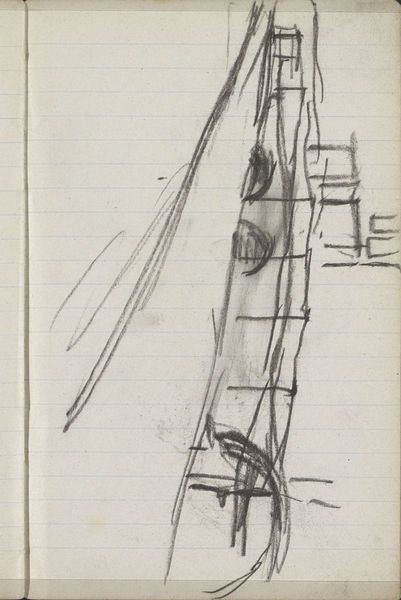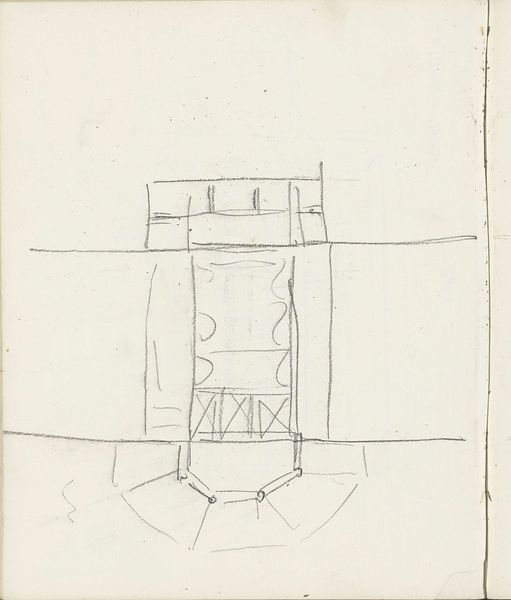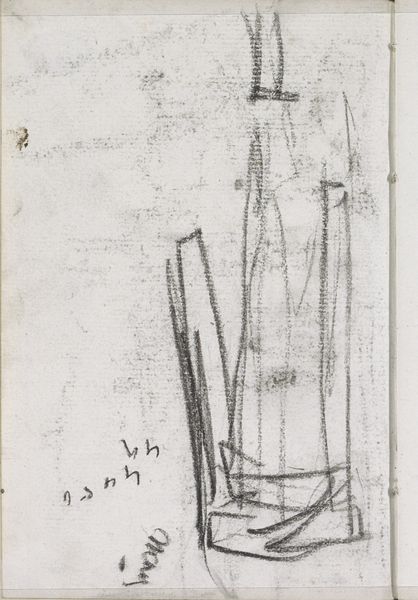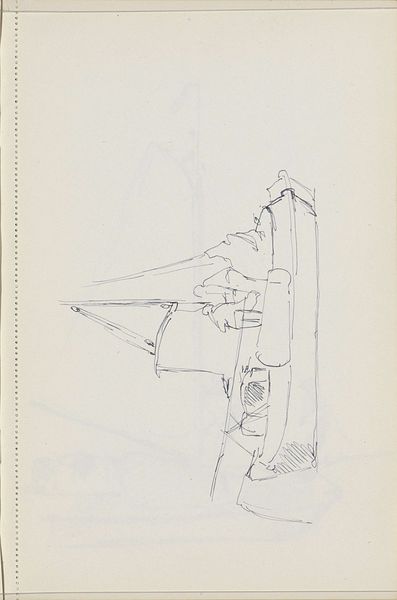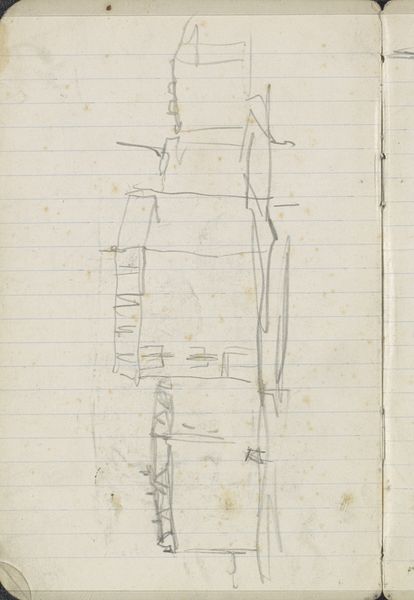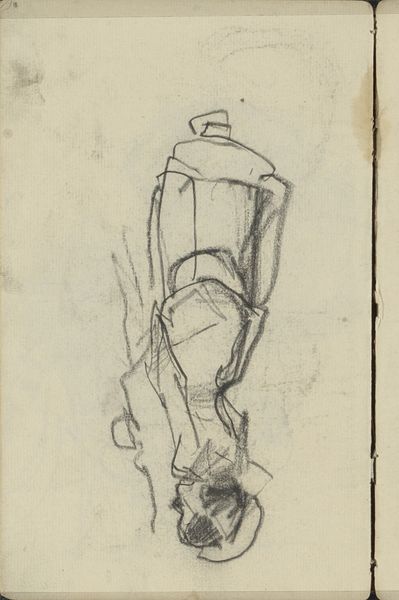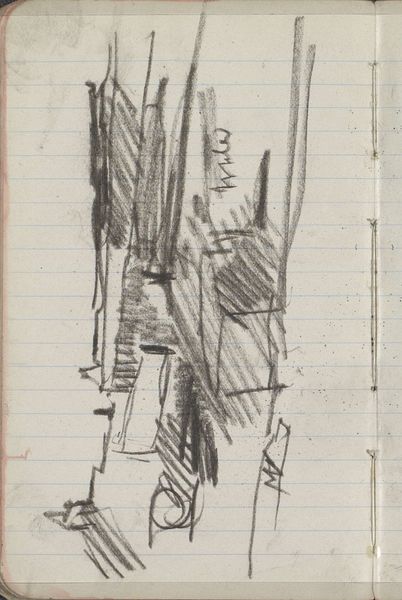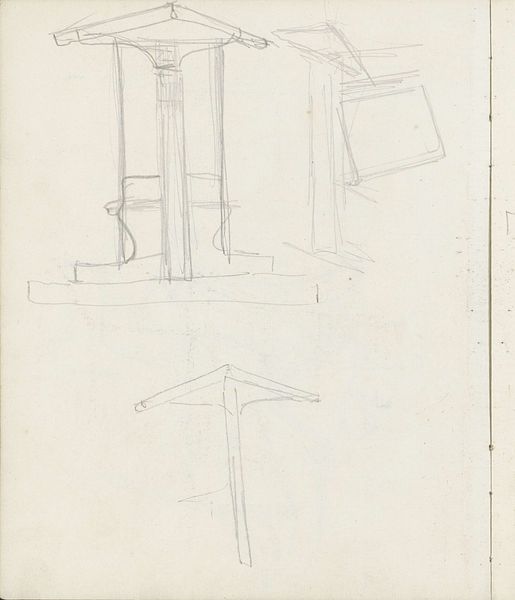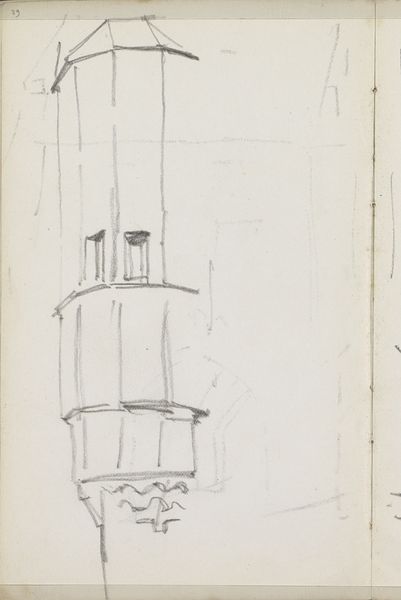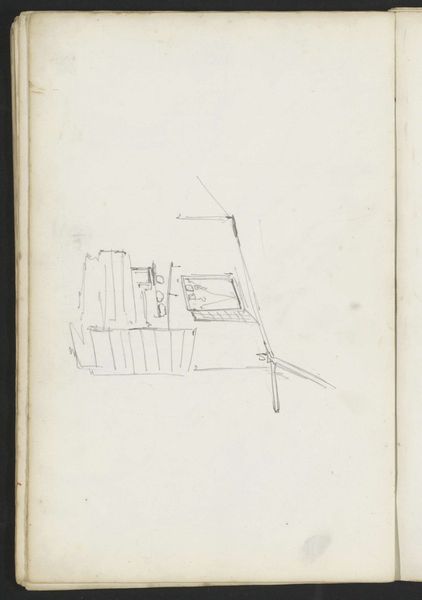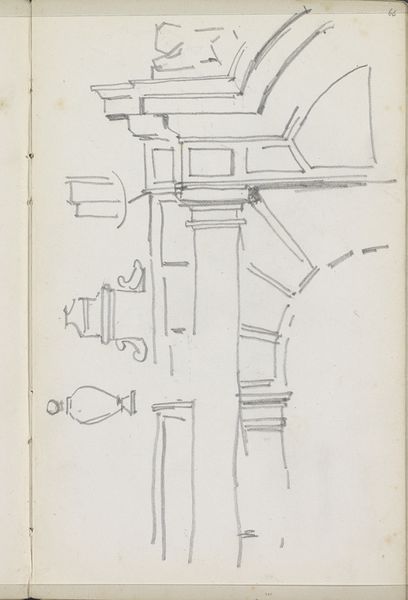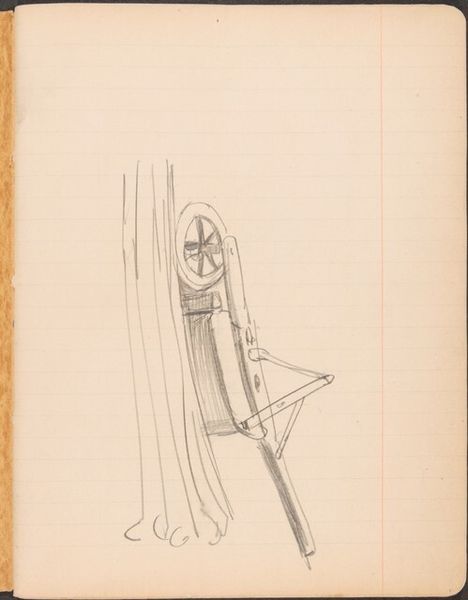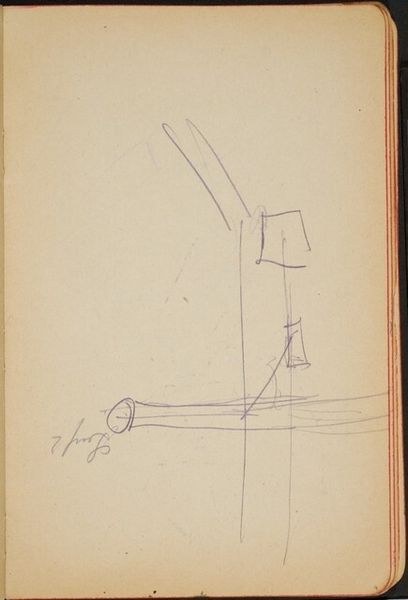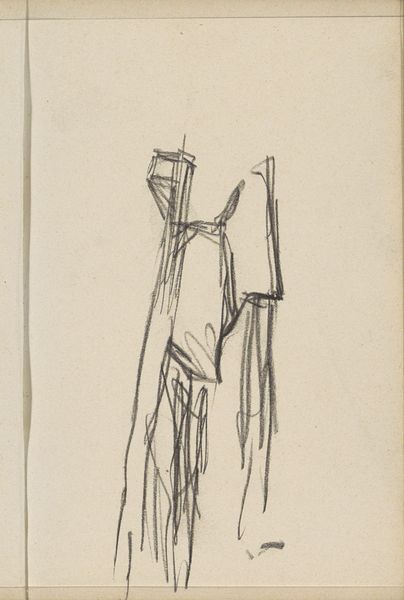![stehender Schubkarren (Wheelbarrow Standing) [p. 7] by Max Beckmann](/_next/image?url=https%3A%2F%2Fd2w8kbdekdi1gv.cloudfront.net%2FeyJidWNrZXQiOiAiYXJ0ZXJhLWltYWdlcy1idWNrZXQiLCAia2V5IjogImFydHdvcmtzL2ExNGRjMTM4LTU4OWYtNDA4OS1iMTUxLTY3NTgxYTM2MzViZC9hMTRkYzEzOC01ODlmLTQwODktYjE1MS02NzU4MWEzNjM1YmRfZnVsbC5qcGciLCAiZWRpdHMiOiB7InJlc2l6ZSI6IHsid2lkdGgiOiAxOTIwLCAiaGVpZ2h0IjogMTkyMCwgImZpdCI6ICJpbnNpZGUifX19&w=1080&q=75)
drawing, pencil
#
drawing
#
form
#
geometric
#
pencil
#
expressionism
Dimensions: page size: 22 x 70.5 cm (8 11/16 x 27 3/4 in.)
Copyright: National Gallery of Art: CC0 1.0
Editor: This is Max Beckmann’s pencil drawing, "stehender Schubkarren (Wheelbarrow Standing)", and what immediately grabs my attention is how it presents a common object with an unexpected level of complexity. How would you begin to analyze this through a formal lens? Curator: Well, note how the composition avoids realistic representation, leaning into abstracted geometric forms to construct the wheelbarrow. We see layered lines, creating depth and shadow. Consider the contrast between the solidity of the wheel and the lightness of the overall sketch. What strikes you about that contrast? Editor: It makes the piece feel somewhat unstable. Like it’s about to fall apart. It definitely isn't your average wheelbarrow portrait. Curator: Precisely! That tension is key. Observe how the structural integrity of the wheelbarrow is questioned. Beckmann subverts the functional object, turning it into an exploration of line, form, and the very idea of representation. Is there any symmetry, balance, or compositional tactic at play? Editor: The basic components of a wheelbarrow are definitely still present and balanced, though askew – a bucket, a wheel, and legs – even though it appears ready to buckle. Do you see him trying to express a new artistic language through these angles? Curator: Indeed. He uses form to distort our expectations. It forces us to see beyond the object's utility and into the artist’s deconstruction of reality. The subject is secondary. What truly remains is an interplay of lines which create structure. Editor: So, through his choices, he communicates a different essence of this commonplace tool through an unexpected point of view. It’s like he’s re-evaluating the wheelbarrow's existence in art itself! Thank you for helping me dissect this simple piece. Curator: It has been my pleasure. Approaching the familiar with a new way of thinking leads to endless discovery.
Comments
No comments
Be the first to comment and join the conversation on the ultimate creative platform.
